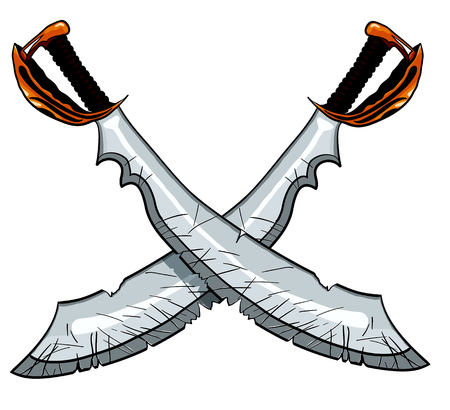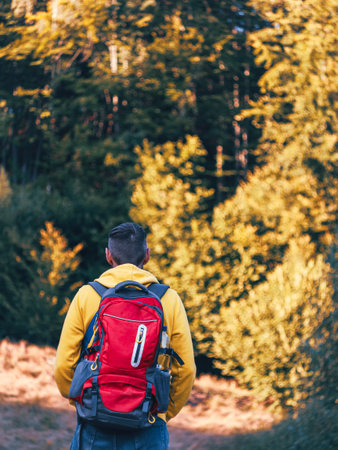1. Introduction to Camping Knives
When youre heading into the great outdoors, one of the most essential tools you can bring along is a reliable camping knife. Whether youre setting up camp in a national park, going backpacking through the Rockies, or just enjoying a weekend getaway in your local forest, a good knife can be your best friend. In this guide to the Top 15 Camping Knives of the Year, we’ll break down what makes a camping knife truly great and why it’s worth investing in the right one.
Why a Camping Knife Matters
A dependable camping knife isn’t just for cutting rope or slicing food. It can help you start a fire, prepare kindling, process game, open gear packaging, and even serve as an emergency tool if things go south. In short, it’s one of the most versatile and important items in any camper’s gear list.
Typical Uses for Camping Knives
| Use Case | Description |
|---|---|
| Food Prep | Slicing meat, chopping vegetables, or opening food packages at the campsite. |
| Fire Starting | Shaving tinder or striking against a ferro rod to create sparks. |
| Shelter Building | Cutting branches or cords when setting up tarps or tents. |
| Gear Maintenance | Trimming paracord, repairing straps, or modifying gear on the fly. |
| Emergency Situations | Prying, digging, or even self-defense if absolutely necessary. |
Key Features to Look For
Not all camping knives are created equal. Here are some key features that make a difference:
- Blade Material: High-carbon steel holds an edge well and is easier to sharpen in the field. Stainless steel resists rust better but may need more frequent sharpening.
- Blade Length: Typically between 3 to 6 inches for camping purposes — long enough for utility but short enough for control.
- Tang Type: A full-tang blade (where the metal runs through the entire handle) offers better strength and durability.
- Handle Grip: Rubberized or textured handles provide better grip in wet conditions.
- Serrated vs. Straight Edge: Straight edges are easier to sharpen and more versatile; serrated sections can be handy for cutting rope or tough materials.
The Right Knife for Your Adventure
Your choice of knife should match your outdoor lifestyle. Are you car camping with family? A basic folding knife might be all you need. Going deep into backcountry trails? You’ll want something tougher and multi-functional. Throughout this guide, we’ll review the top 15 camping knives of the year — comparing their strengths, weaknesses, and ideal use cases — so you can find one that fits your next adventure perfectly.
2. How We Chose the Best Camping Knives
Picking the top camping knives of the year wasn’t just about flashy looks or brand names. We focused on what really matters when you’re out in the wild — performance, reliability, and practicality. Whether youre slicing rope, prepping food, or making kindling, your knife needs to keep up. Here’s a breakdown of the key factors we used to evaluate each knife.
Blade Material
The steel used in a knife blade plays a huge role in its sharpness, edge retention, rust resistance, and overall strength. We looked for blades that could handle outdoor abuse without constant sharpening or fear of corrosion. Below is a quick comparison of popular blade materials we considered:
| Blade Material | Pros | Cons |
|---|---|---|
| Stainless Steel (e.g., 420HC, 440C) | Great rust resistance, low maintenance | Can require more frequent sharpening |
| Carbon Steel (e.g., 1095) | Very tough, holds an edge well | Prone to rust without proper care |
| D2 Tool Steel | Excellent wear resistance and hardness | Less corrosion-resistant than stainless options |
Ergonomics and Grip
A good camping knife should feel natural in your hand — not too heavy, not too slippery. We tested how comfortable each knife felt during extended use and under different weather conditions. Textured handles, finger guards, and non-slip materials like G10 or rubber made a big difference.
Versatility and Functionality
The best knives do more than just cut. We favored models that offered multiple uses — like integrated fire starters, gut hooks for field dressing game, or serrated edges for cutting rope. Fixed blades with full tang construction were preferred for heavy-duty tasks.
Durability in Rugged Conditions
Campsites can be unpredictable — rain, mud, cold temps, or rocky terrain are all part of the experience. We tested how well each knife held up under real-world stress: batoning wood, cutting through tough materials, and even being dropped onto hard surfaces.
Portability and Sheath Quality
No one wants to fumble around for their knife when they need it most. We rated knives on ease of carry — whether they had belt clips, MOLLE-compatible sheaths, or compact folding designs. A secure and accessible sheath was a must-have feature.
Value for Money
A high price doesn’t always mean high performance. We compared features against cost to make sure every knife on our list delivered solid value. Some budget-friendly models surprised us with their quality and durability.
By combining hands-on testing with expert insights and user reviews from across the country, we put together a list that highlights the best camping knives available this year — built to handle whatever your adventure throws at you.

3. Top 15 Camping Knives of the Year
When youre out in the wild, a good camping knife can be your best friend. From prepping food to cutting rope or carving wood, it’s an essential tool in any camper’s pack. Here’s our detailed roundup of the top 15 camping knives this year. Weve included pros and cons, price ranges, standout features, and what each knife is best used for.
| Knife Model | Price Range | Pros | Cons | Best For |
|---|---|---|---|---|
| Morakniv Companion | $20 – $30 | Affordable, sharp out of the box, great grip | No full tang, not ideal for heavy-duty tasks | Beginner campers, general camp chores |
| ESEE 4 | $100 – $130 | Full tang, rugged design, lifetime warranty | Heavier than others, higher price point | Bushcraft, survival situations |
| Benchmade Bugout 535 | $160 – $180 | Lightweight, premium steel, smooth deployment | Not suited for batoning or hard use | Ultralight backpacking, EDC (Everyday Carry) |
| Kershaw Blur | $70 – $90 | SpeedSafe assisted opening, durable blade coating | Liner lock may wear over time | Pocket carry, quick tasks around camp |
| Buck 119 Special | $60 – $80 | Classic design, strong fixed blade, made in USA | No modern grip texture, heavier sheath | Hunting camps, traditional campers |
| Gerber StrongArm | $80 – $100 | Tactical design, excellent sheath system, full tang | A bit bulky for minimalist setups | Tactical camping, emergency kits |
| SOG Seal Pup Elite | $85 – $110 | Serrated edge available, lightweight for its size | Might require frequent sharpening with heavy use | Camps near water or for fishing trips |
| Kabar Becker BK2 Campanion | $90 – $120 | Tank-like build, perfect for chopping and batoning wood | Very heavy and thick blade—not ideal for fine tasks | Bushcraft and long-term wilderness use |
| Civilware Clipper Folding Knife | $120 – $150 | Sleek design, lightweight titanium hardware | Pocket clip isn’t very strong under stress | Aesthetic-conscious campers and light users |
| COLD STEEL SRK (Survival Rescue Knife) | $60 – $90 | Tough as nails, easy to maintain | No fancy features or aesthetics | Tough environments and wet conditions |
| Zancudo ESEE Folder | $40 – $60 | Pocket-friendly version of a classic ESEE design | No assisted opening | Pocket carry fans looking for durability |
| Boker Plus Bushcraft XL | $110 – $140 | Naturally contoured handle scales with great ergonomics | Larger size makes it harder to carry discreetly | Bushcrafting and detailed woodwork at camp |
| Mora Garberg Full Tang | $90 – $110 | A true upgrade from the Companion with added strength | Slightly pricier than other Mora models | Bushcraft beginners stepping up their gear |
| Civivi Elementum D2 Steel Folder | $50 – $70 | Sleek look meets dependable performance in a folding format | D2 steel may rust without care |
This list covers a wide range of camping styles—from ultralight backpacking to hardcore bushcraft—so whether youre heading to a national park or deep into the backwoods, theres a knife here that fits your needs.
4. What to Look for When Buying a Camping Knife
Choosing the right camping knife isn’t just about picking the coolest-looking blade — it’s about finding the one that fits your camping style and needs. Whether youre prepping kindling, slicing food, or handling unexpected tasks on the trail, the right knife can make all the difference. Here’s a practical guide to help you figure out what to look for when shopping from our list of the Top 15 Camping Knives of the Year.
Blade Type
The blade is the heart of any knife. There are several types suited for different camping tasks:
| Blade Type | Description | Best For |
|---|---|---|
| Fixed Blade | A solid, non-folding blade often more durable and reliable. | Heavy-duty tasks like chopping wood, food prep, survival situations. |
| Folding Blade | A compact, foldable design that fits easily in your pocket. | Everyday carry (EDC), light campsite tasks. |
| Straight Edge | A smooth edge ideal for clean cuts. | Slicing food, general use. |
| Serrated Edge | A saw-like edge good for cutting rope or tough material. | Emergency cutting, sawing through branches or nylon. |
Handle Design
The handle should offer both comfort and grip — especially when wet. Look for materials like:
- Rubber or textured plastic: Great grip and control even in rainy conditions.
- Micarta or G10: Durable composite materials used in premium knives; excellent for all-weather use.
- Wood: Classic look and feel but may get slippery if wet and require more maintenance.
Weight and Size
The perfect weight depends on how you plan to use your knife. Heres a quick breakdown:
| Weight Range | Suits Best For |
|---|---|
| < 4 oz (Lightweight) | Packing light, ultralight backpacking, simple tasks. |
| 4–7 oz (Medium) | A balance between portability and performance. Great all-rounders. |
| > 7 oz (Heavy-duty) | Bushcraft, wood processing, survival situations where strength matters. |
Your Specific Camping Needs
No two campers are alike. Think about how you spend your time outdoors:
- If youre car camping with a family, a sturdy fixed blade for cooking and gear setup is ideal.
- If youre backpacking solo, a lightweight folding knife might be all you need.
- If bushcraft is your thing, go for something full-tang with a drop point blade that can take abuse.
Tactical Tip:
A lot of people overlook the sheath! A good sheath makes carrying safer and more convenient — look for ones with belt loops or MOLLE compatibility if you’re hiking long distances or moving fast at camp.
5. Maintenance and Safety Tips for Your Camping Knife
Taking care of your camping knife not only extends its lifespan but also ensures it performs reliably on every outdoor adventure. Whether you picked one of the top 15 knives from our list or already have a favorite blade, keeping it sharp, clean, and safe to use is key. Heres what you need to know:
Keep It Sharp
A dull knife is actually more dangerous than a sharp one—it requires more force and can slip easily. Sharpen your knife regularly using a sharpening stone, honing rod, or a portable sharpener designed for outdoor use.
Basic Sharpening Tools
| Tool | Best For | Portability |
|---|---|---|
| Sharpening Stone (Whetstone) | At-home maintenance | Low |
| Ceramic Rod/Honing Rod | Quick touch-ups | Medium |
| Pocket Knife Sharpener | On-the-go sharpening | High |
Clean After Every Trip
Dirt, sap, food residue, and moisture can lead to corrosion or even damage your knife over time. Always clean your knife after each camping trip.
Cleaning Steps:
- Use warm water and mild soap to wipe down the blade.
- Avoid soaking the knife—especially if it has a wooden handle.
- Dry thoroughly with a soft cloth.
- Add a light coat of oil to the blade to prevent rust (especially for carbon steel blades).
Store It Properly
A good storage routine can help preserve the edge and prevent accidents.
- Use a sheath or blade guard when storing or transporting your knife.
- Avoid tossing it in a gear bag unprotected—this can damage both the knife and other items.
- If youre storing it long-term, keep it in a dry place and oil the blade lightly before packing it away.
Handle With Care: Safety First!
Your camping knife is a tool—not a toy. Here are some tips to ensure safe handling:
- Always cut away from your body and others.
- Use a stable surface when chopping or slicing.
- If youre passing the knife to someone else, offer them the handle first with the blade facing away from both of you.
No matter which model you chose from our Top 15 Camping Knives of the Year, regular maintenance and safe habits will keep your blade adventure-ready for years to come.


